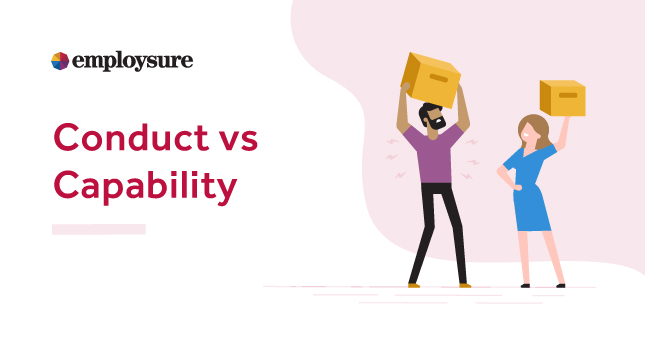
Conduct at work is a separate issue to that of capability. It can be difficult to differentiate between the two. Employers must establish whether the employee is falling short of standards because of their capability or conduct before proceeding with formal action.
Capability is when an employee is unable to achieve the expected standards of performance due to a lack of skill, ability, or training. Conduct relates to a person’s behaviour at work not reaching the required standards.
The key difference is the level of control the employee has over the situation. When it relates to capability, the employee may be trying as hard as they can but simply cannot reach the expected standards. However, with regard to conduct issues, the employee could perform better but for whatever reason is choosing not to do so.
Some of the behaviours that may indicate poor conduct at work may include: theft, drinking or drug abuse at work, abusive behaviour, leaking confidential documents or information, misuse of computers, lack of punctuality, poor presentation, unauthorised absence, inappropriate conduct with other members of staff during office hours or outside work hours that impacts on the employee’s job.
If there is a gap between the employee’s performance and the standards expected, then this is defined as a capability issue. Such issues should be drawn to the employee’s attention at an early stage and expected improvements, with measurable targets, should be laid out. The employee should feel both supported in improving their work performance and also understand the potential consequences if improvement is not attained with a certain time.
As an employer, it is important to ensure that there is a consistent approach to the management of capability at work. The main aim with regard to capability issues is to ensure that, wherever possible, standards of work are reaching the performance levels required of the employee. All concerns about capability should be logged on personnel records and communicated to the employee as soon as possible.
Capability should be assessed by measuring the employee’s skills, abilities and performance against clear standards and expectations. These expected standards of performance should have been communicated to the employee from the outset of their employment and be consistent with expectations of all employees in the same role. It may be that the employee needs extra support such as training in order to achieve the expected standards of work.
As Australia’s leading workplace relations specialist, we can assist you with understanding or managing poor conduct or poor capability of employees in your workplace. Call us today on 1300 651 415 to speak with a specialist.







